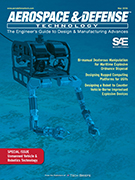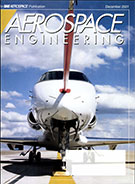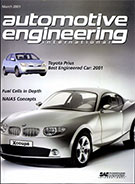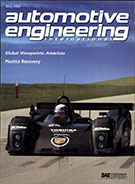Magazine

Aerospace & Defense Technology: April 2014
2014-04-01
Toward smarter manufacturing and materials At the U.K.'s new Advanced Manufacturing Research Center, engineers and innovators have at their disposal some of the world's most advanced design and manufacturing assets for precision engineering. More electric, integrated fuel systems Engine system reliability can be improved by advanced electric architectures, while the reduction of hydraulic components, fuel tubes, and fittings can enhance the maintainability of the engine and minimize pilot workload.



















